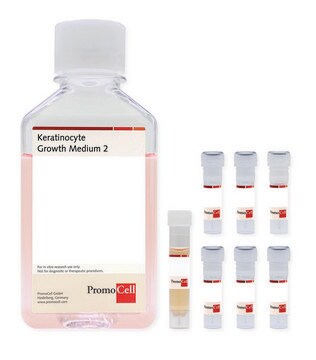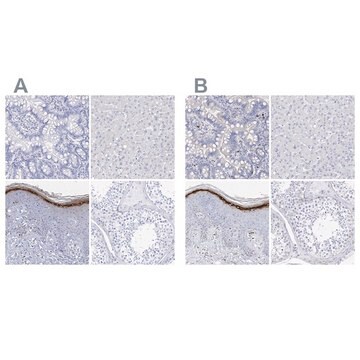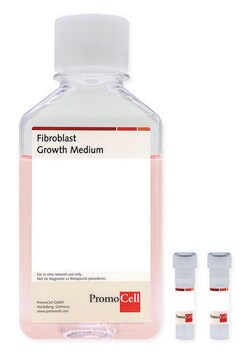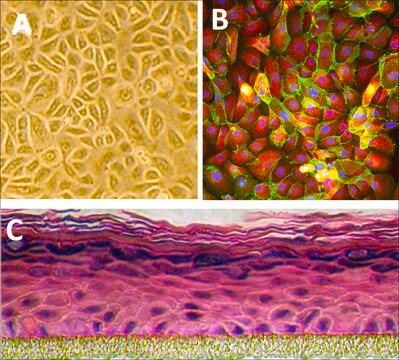SCM310
3dGRO® Skin Differentiation Medium
Synonim(y):
3dGRO Medium, Medium for Skin Differentiation, Skin Differentiation Medium
About This Item
Polecane produkty
Postać
liquid
opakowanie
pkg of 500 mL
metody
cell differentiation: suitable
zanieczyszczenia
<2 EU/mL endotoxin
pH
7.0-7.6
osmolalność
326-360 mOsm
Opis ogólny
The 3dGRO® Skin Differentiation Medium is an optimized formulation that supports robust human keratinocyte differentiation using organotypic 3D cultures during the medium-air incubation step. The media produces complex stratified squamous epithelium containing both proliferating (BrdU+) and cornified (Filaggrin+) cell polulations within 10 days. The media is complete and does not require further supplementation.
Zastosowanie
Research Category:
Cell Culture
Jakość
pH: 7.0−7.6
Osmolarity: 326−360 mOsm
Sterility: No growth
Mycoplasma: Negative
Endotoxin: <2EU/mL
Functional: Pass
Przechowywanie i stabilność
Informacje prawne
Oświadczenie o zrzeczeniu się odpowiedzialności
Kod klasy składowania
12 - Non Combustible Liquids
Klasa zagrożenia wodnego (WGK)
WGK 1
Certyfikaty analizy (CoA)
Poszukaj Certyfikaty analizy (CoA), wpisując numer partii/serii produktów. Numery serii i partii można znaleźć na etykiecie produktu po słowach „seria” lub „partia”.
Masz już ten produkt?
Dokumenty związane z niedawno zakupionymi produktami zostały zamieszczone w Bibliotece dokumentów.
Protokoły
3D cell culture protocol for generating epidermal human skin tissue using primary human keratinocytes, dermal fibroblasts, and collagen-coated transwell inserts.
3D cell culture protocol for generating epidermal human skin tissue using primary human keratinocytes, dermal fibroblasts, and collagen-coated transwell inserts.
Nasz zespół naukowców ma doświadczenie we wszystkich obszarach badań, w tym w naukach przyrodniczych, materiałoznawstwie, syntezie chemicznej, chromatografii, analityce i wielu innych dziedzinach.
Skontaktuj się z zespołem ds. pomocy technicznej








